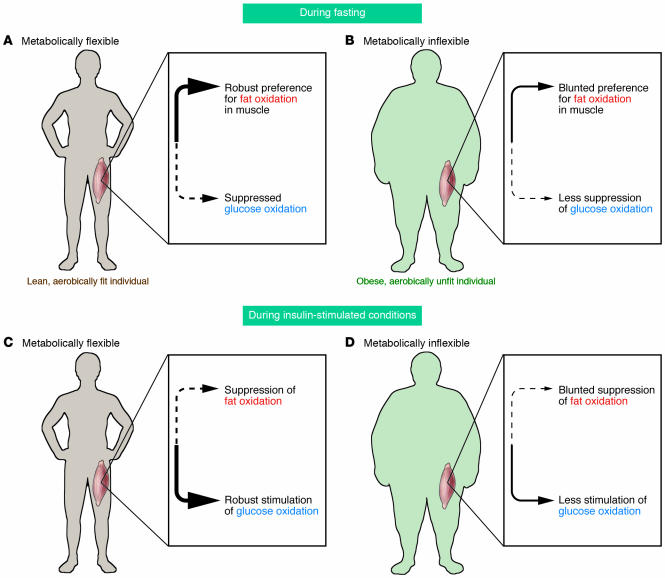Figure 1.
The flexibility of skeletal muscle to switch between oxidizing fat and glucose is related to insulin sensitivity, percentage of body fat, and fitness. Differences in the patterns of glucose and fat oxidation in skeletal muscle during fasting conditions are shown in a lean, aerobically fit individual (A), in whom there is a high reliance upon fat oxidation during fasting conditions, and in an obese, sedentary individual (B), in whom there is less reliance on fat and a greater reliance on glucose oxidation. The patterns of glucose and fat oxidation during insulin-stimulated conditions are also shown. In skeletal muscle of a lean, aerobically fit individual (C), insulin strongly suppresses fat oxidation and induces a high reliance upon glucose oxidation, whereas in skeletal muscle of an obese, sedentary individual (D), there is less stimulation of glucose oxidation by insulin and blunted suppression of fat oxidation. Thus, in skeletal muscle of obese, sedentary individuals, there is a constricted range in switching between fat and glucose oxidation compared to the dynamic switching evident in aerobically fit, lean individuals. This constrained homeostatic adjustment to the transitions between fasting and insulin-stimulated conditions in obese, sedentary individuals has been described as “metabolic inflexibility” of skeletal muscle.

